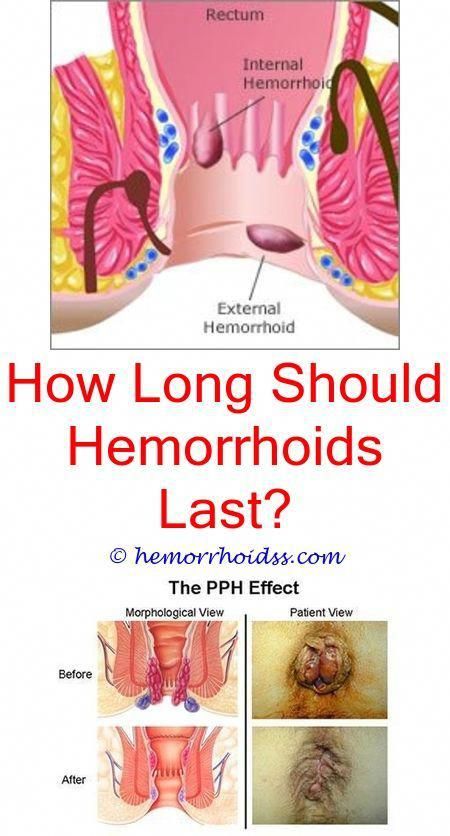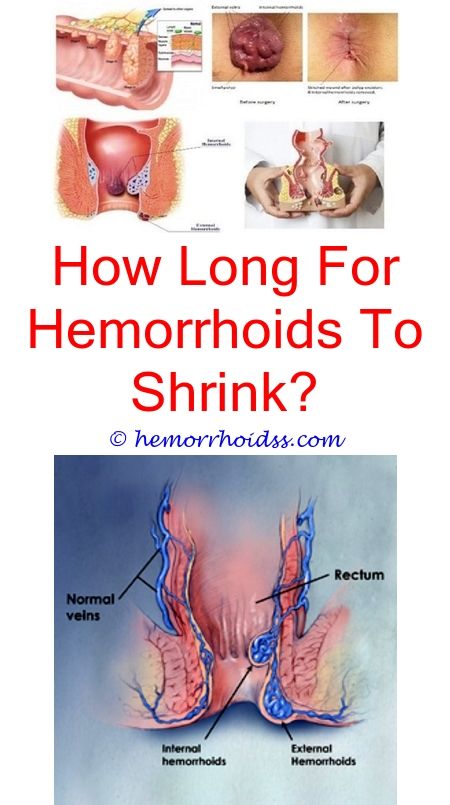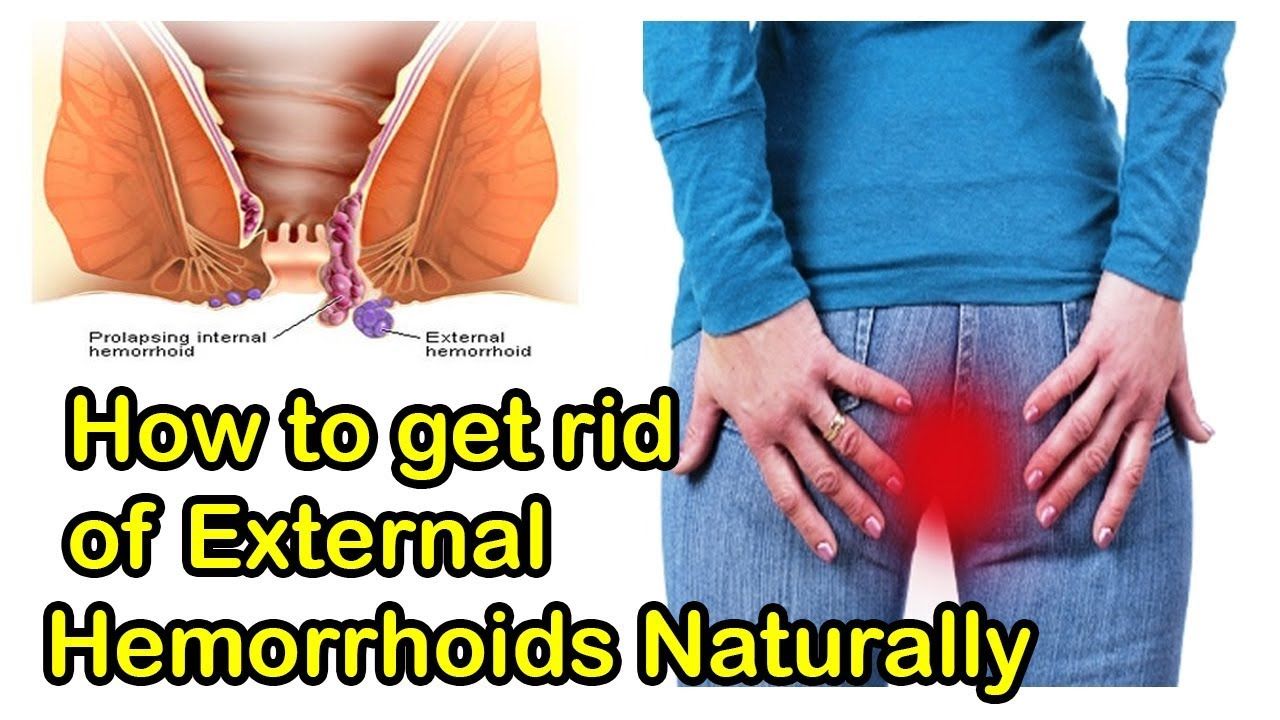Medical Procedures To Shrink Hemorrhoids
If medications and remedies dont alleviate your discomfort and need further help, plenty of safe and fast procedures are available. Many methods only require one quick office visit. The risk of hemorrhoids returning is very low. And almost all of the procedures are minimally invasive, relatively painless, and produce lasting results.
Procedures include:
- Traditional : The hemorrhoids are removed by an instrument, usually a scalpel. This is a standard procedure that easily keeps hemorrhoids from coming back.
- Rubber Banding Ligation: Common and proven highly effective, the external hemorrhoids are banded near the base to cut off blood flow, allowing the unwanted skin tag to fall off naturally.
- Infrared Therapy: This method uses an infrared laser to create fibrous tissue, preventing blood flow. This procedure will shrink hemorrhoids, and the skin tags will then fall right off.
- Electrotherapy: Much like the traditional method, electrotherapy works by using a heated element, like a cautery pencil to remove the troublesome issue safely.
- Cryotherapy: After a local anesthetic, the doctor will freeze and remove the hemorrhoid. This method may leave you with a small amount of discomfort and requires about two weeks of recovery.
- Stapling: This method uses circular titanium staples and shares a similar goal with the same desired results as banding, infrared, and cryotherapy.
Causes Of External Hemorrhoids
The most common cause of external hemorrhoids is repeated straining during a bowel movement, leading to the veins of the anus or rectum becoming dilated or enlarged. Because external hemorrhoids result from excessive pressure in the rectums veins, certain factors can increase the chances of external hemorrhoids forming.
Some of the most common external hemorrhoid causes include:
- Pregnancy.
- Heavy weight lifting.
- Obesity.
Each of the above places added pressure on the rectal veins, which may eventually cause increased swelling in the external hemorrhoids. For example, in pregnant women, the uterus puts extra pressure on these veins and can cause them to enlarge. To reduce the likelihood of developing external hemorrhoids or prevent symptoms from worsening, limit the amount of time you spend on the toilet to two minutes and make sure you always practice proper form when heavy lifting.did
Doctor Care For Hemorrhoids
Medical attention isn’t only for thrombosed hemorrhoids. If a week of at-home care doesn’t relieve your hemorrhoid problem, it’s a good idea to schedule an appointment with your doctor. You should also have an exam if there’s bleeding involved. That can be a symptom of several different conditions, some of which are more serious than others.
After diagnosing you with hemorrhoids, your doctor may suggest continuing with at-home care or moving on to surgical intervention, particularly if you’ve repeatedly dealt with thrombosed hemorrhoids. The most common surgical procedure for this condition is hemorrhoidectomy, which involves excising the affected tissue from the body.
Recovering from a hemorrhoidectomy can be painful. If you have internal hemorrhoids in addition to the external ones, your doctor may recommend treating the internal ones first. Sometimes, addressing internal hemorrhoids solves the external problem as well. Rubber band ligation is a minimally invasive procedure for getting rid of internal hemorrhoids.
After the symptoms of an external hemorrhoid go away, you may be left with a harmless skin tag. Your doctor can remove the tag through a quick in-office procedure.
Don’t Miss: What Cream Do You Use For Hemorrhoids
Where Do External Hemorrhoids Come From
External hemorrhoids are caused by swelling in the anal or rectal veins. They become susceptible to irritation and display symptoms that cause discomfort. There are many causes of hemorrhoids in general. However, there are specific causes of external hemorrhoids as well. These include:
- Pregnancy
- Eating habits
What Shrinks Hemorrhoids Fast

Apply an over-the-counter hemorrhoid cream or suppository containing hydrocortisone, or use pads containing witch hazel or a numbing agent. Soak regularly in a warm bath or sitz bath. Soak your anal area in plain warm water for 10 to 15 minutes two to three times a day.
Recommended Reading: How To Treat Severe Hemorrhoids At Home
Most Popular External Hemorrhoid Treatment Hemorrhoidectomy
This is a very commonly suggested method to treat hemorrhoids of severe cases which requires immediate removal, by making incisions on your tissue. The surgeon can either use a scalpel , a cautery pencil or a specialized laser.
This procedure is done in a surgery room, though you can usually go home on the day of treatment itself.
It works for both external and internal hemorrhoids treatment, but it tends to be very painful even after a successful operation. In fact, it is well-known to be an excruciating treatment. Most patients need analgesics after operation.
Although its risks are considered relatively low, it generally has more risks of complications as compared to other hemorrhoid surgical methods.
An outpatient hemorrhoidectomy performed in an ASC costs around $3000. If performed in a hospital, it will cost around $5700. However, prices can vary drastically between different states and countries, and the coverage from insurance and government subsidies.
What Type Of Doctor Treats External Hemorrhoids
Your primary care physician can treat smaller, less severe external hemorrhoids. In some cases, they can prescribe a stronger hemorrhoid cream or suppository. If you have a more serious case of hemorrhoids, or your external hemorrhoids are persistent, your doctor may refer you to a specialist called a gastroenterologist. If you require a surgical procedure for your hemorrhoids, you will want to find a colon and rectal surgeon.
External hemorrhoids are the most bothersome type of hemorrhoids. Although they can be painful and uncomfortable, they are treatable and can often be resolved without a surgical procedure.
External Hemorrhoids Guide 101-Continued
Also Check: How To Take Care Of Hemorrhoids While Pregnant
How To Stop Bleeding Hemorrhoids
The first thing most people worry about when they have minor rectal bleeding is that they have a cancer. But its the cause of rectal bleeding only 1 to 2 percent of the time.
Two problems are usually responsible for blood on the paper, on the stool or in the toilet: hemorrhoids and anal fissures. The good news is that both problems are usually easy to fix.
Purpose Of Hemorrhoid Surgery
The purpose of hemorrhoid surgery is to remove external or internal hemorrhoids.
That said, even though hemorrhoidectomy is the most effective and definitive treatment for hemorrhoids, it’s linked to significantly more pain and complications than non-surgical therapies.
Therefore, the American Gastroenterological Association advises that surgery only be considered for a specific and small group of individuals.
Potential candidates for hemorrhoidectomy generally include patients who:
- Have tried medical and non-operative hemorrhoid therapies without success, or who cannot tolerate them
- Have grade 3, grade 4, or mixed internal and external hemorrhoids that cause symptoms
- Have symptomatic hemorrhoids along with an associated anorectal condition that warrants surgery
- Prefer surgery and have discussed therapy options with their referring healthcare provider and surgeon
When hemorrhoid surgery is scheduled, various pre-operative tests may need to be run, especially for patients undergoing general anesthesia.
Examples of such tests include:
Don’t Miss: What Is The Best Home Treatment For Hemorrhoids
Improving Your Diet And Lifestyle
How To Get Rid Of External Hemorrhoids Permanently
There are a few different ways to get rid of external hemorrhoids permanently. For some patients, hemorrhoids only occur during pregnancy.
Once you give birth, your hemorrhoids may resolve permanently.
For other patients, lifestyle changes may be the resolution needed to say goodbye to hemorrhoids forever.
Lifestyle changes can include eating healthier foods, avoiding straining during bowel movements, exercising, and avoiding prolonged sitting.
For those with more severe external hemorrhoids, a surgery called a hemorrhoidectomy may be necessary to permanently resolve the symptoms of hemorrhoids.
Read Also: What Kind Of Doctor Do I See About Hemorrhoids
Blood Clots In The Hemorrhoid
External hemorrhoids can be very painful if they become thrombosed. Thrombosed hemorrhoids are usually purple-blue.
A thrombosed hemorrhoid occurs when the veins that cause the bulge in the hemorrhoid develop a blood clot. As a result, blood is unable to flow to the hemorrhoid, and the effect can be extremely painful.
The body will often absorb the blood clot, therefore reducing the symptoms and easing the pain.
When the blood clot passes or the body reabsorbs it, an external hemorrhoid may sometimes leave behind a perianal skin tag. A doctor may recommend surgical removal if this skin tag regularly catches stool and is difficult to keep clean.
Treatments include home remedies and surgery.
Examples of home remedies people can use to treat hemorrhoids include:
- taking warm baths
- gently cleaning the anus after a bowel movement, often by using moistened wipes or cotton pads
- applying cloth-covered ice packs to reduce swelling
- taking over-the-counter pain relievers, such as ibuprofen or acetaminophen, to relieve pain and discomfort
- applying ointments, such as creams with witch hazel or hydrocortisone- that relieve itching
How Do You Treat External Hemorrhoids Diagnosis

External hemorrhoids appear as bumps and/or dark areas surrounding the anus. If the lump is tender, it suggests that the hemorrhoid is thrombosed. Any lump needs to be carefully followed, however, and should not be assumed to be a hemorrhoid since there are rare cancers of the anal area that may masquerade as hemorrhoids.
Also Check: How Do Men Get Hemorrhoids
Hemorrhoid Remedies You Can Try On Your Own At Home
There are several steps you can take at home to ease the discomfort caused by hemorrhoids:
- Take a sitz bath two to three times daily for 15 to 20 minutes. Sit in warm water, covering just your hips and buttocks. This can help reduce itching and irritation. You can take a sitz bath in a few inches of water in a regular tub, but small tubs that fit over toilet seats are also available for this purpose at pharmacies. Following a sitz bath, gently pat the area dry to avoid further irritation.
- Use ice packs on the area to relieve swelling and pain.
- Don’t push too hard or strain while passing a bowel movement.
- Clean your anus after each bowel movement by gently patting with moistened pads, such as baby wipes. Using hard, dry toilet paper, which may contain fragrance, can cause further irritation.
- Keep the area clean by bathing or showering daily with warm water. After bathing, gently pat the area dry. You can even use a hair dryer to dry the area.
- Sit on cushions rather than hard surfaces to help lessen the swelling of hemorrhoids and keep new ones from forming.
- Take over-the-counter pain relievers, such as acetaminophen, ibuprofen, or aspirin as needed.
RELATED: 6 Easy Ways to Prevent Hemorrhoids
A Range Of Treatments
In choosing the treatment for hemorrhoids, one should consider the disease grade and severity, its impact on the quality of life, the degree of pain it causes, the patients likelihood of adhering to treatment and the patients personal preference.
Regardless of severity, treatment almost always starts with a high-fiber diet and other lifestyle modifications that include bowel movement behaviors. This requires practitioners to spend significant time on patient education, regardless of the type or severity of the disease.
Treatments can be grouped in three categories: conservative, office-based and surgical. Practitioners should thoroughly discuss the options with the patient, emphasizing the pros and cons of each.
Don’t Miss: What Can Cause Hemorrhoids To Flare Up
Diagnosing And Classifying Hemorrhoids
Hemorrhoids are the distal prolapse of the arteriovenous bundle, muscle fibers and surrounding connective tissue as an envelope below the dentate line in the anal canal. They usually present with painless rectal bleeding.2
The diagnosis of hemorrhoids relies on history and physical examination rather than on laboratory testing or imaging studies. Typically, the presenting symptom is painless rectal bleeding associated with bowel movements, usually appearing as bright red blood on the toilet paper or coating the stool. Severe itching and anal discomfort also are common, especially with chronic hemorrhoids.
Medical Procedures For Hemorrhoids That Wont Go Away
If hemorrhoids don’t go away with home treatments, medical procedures may be necessary.
If you visit your doctor with painful external hemorrhoids those located around the outside of the anus that are visible from the outside your doctor may offer to excise them during the office visit. You will be given a shot with a local anesthetic to numb the area before the procedure.
Doctor’s office procedures for internal hemorrhoids those located inside the rectum may include:
Rubber Band Ligation This is the most commonly performed hemorrhoid procedure in the United States. In this procedure, which can be used for grades 1, 2, and 3 internal hemorrhoids , the doctor places a small rubber band around the base of the hemorrhoid, which can be done when your doctor performs an anoscopy examination to better visualize the hemorrhoids. The rubber band cuts off the hemorrhoid’s blood supply.
The procedure typically causes the hemorrhoid to shrink and fall off within about a week, though several short visits to your doctor may be necessary to completely get rid of the hemorrhoid. Minor bleeding and a feeling of pressure may occur, but this can usually be alleviated with OTC pain relievers. This procedure is not associated with significant recovery time.
RELATED: 4 Signs Your Hemorrhoids Warrant a Doctors Visit
Recommended Reading: What To Use For Hemorrhoids
Procedure For Prolapse And Hemorrhoids
PPH is also called a stapled hemorrhoidectomy. The doctor will use a stapler-like device to reposition the hemorrhoids and cut off their blood supply. Without blood, they’ll eventually shrivel and die.
It can treat hemorrhoids that have and have not prolapsed, or slipped down out of the anus.
This procedure moves the hemorrhoid to where there are fewer nerve endings, so it hurts less than a traditional hemorrhoidectomy. You’ll also recover faster and have less bleeding and itching. And there are generally fewer complications.
How To Heal Hemorrhoids: Over
Products used to treat hemorrhoids are available as
- ointments,
- foams, and
- pads.
When used around the anus, ointments, creams, and gels should be applied as a thin covering. When applied to the anal canal, these products should be inserted with a finger or a pile pipe. Pile pipes are most efficient when they have holes on the sides as well as at the end. Pile pipes should be lubricated with ointment prior to insertion. Suppositories or foams do not have advantages over ointments, creams, and gels.
Also Check: How Do You Know If You Have Hemorrhoids
You May Like: Should I Go To The Doctor For Hemorrhoids
Whom Do Hemorrhoids Affect
Although most people think hemorrhoids are abnormal, almost everyone has them. Hemorrhoids help control bowel movements. Hemorrhoids cause problems and can be considered abnormal or a disease only when the hemorrhoidal clumps of vessels enlarge.
Hemorrhoids occur in almost everyone, and an estimated 75% of people will experience enlarged hemorrhoids at some point. However only about 4% will go to a doctor because of hemorrhoid problems. Hemorrhoids that cause problems are found equally in men and women, and their prevalence peaks between 45 and 65 years of age.
Where Do External Hemorrhoids Form

External hemorrhoids form right around the outside of the anal opening. A hemorrhoid is a general term for the cluster of blood vessels and veins that lie beneath the surface of the skin.
Things like constipation, pregnancy, long periods of sitting or standing, and age all factor into hemorrhoid flare-ups.
External hemorrhoids begin to form due to this abnormal stress, and they resemble small or large bumps that are firm yet rubbery to the touch, right outside of the anus.
Sometimes, only one external hemorrhoid will form, but depending on the inflammation of these veins, there could be multiple external hemorrhoids at one given time.
Read Also: What Ointment Is Best For Hemorrhoids
Why Shouldnt I Pop A Hemorrhoid
Hemorrhoids, even when theyre large and outside of your anus, are very difficult to see yourself. As a result, theres no way to know what you are actually doing when attempting to pop one. This also makes it very easy to accidentally injure the delicate tissue surrounding your anal area. However, not all skin lesions around the anus are hemorrhoids. Its important to not self-diagnose. This can lead to a delay in the proper diagnosis and treatment of other conditions, like anal cancer.
In addition, your anal area is exposed to lots of bacteria from both bowel movements and the skin. An open wound in this area, including the type that would result from popping a hemorrhoid, is very vulnerable to infection.
Popping a hemorrhoid can also be extremely painful, both when you pop it and during the healing process.